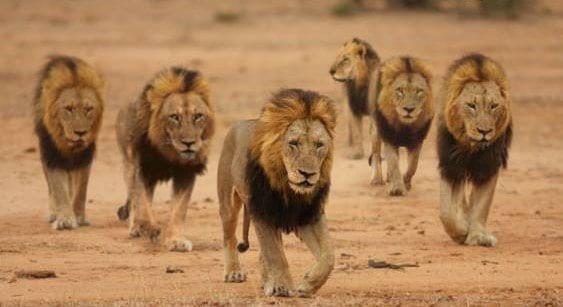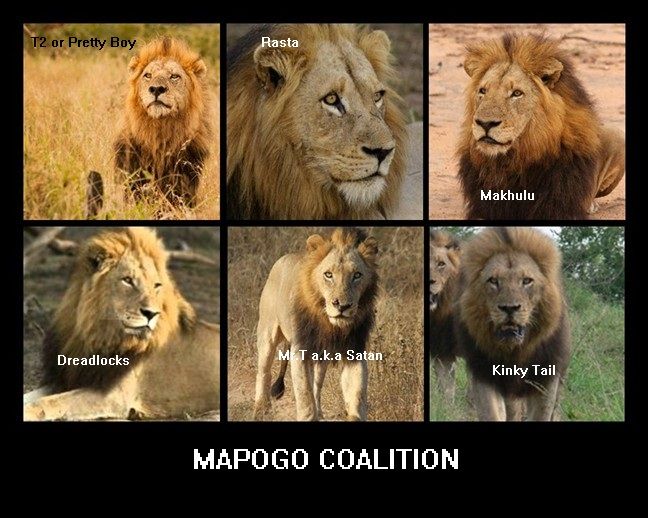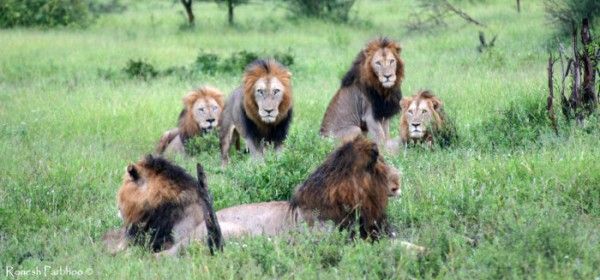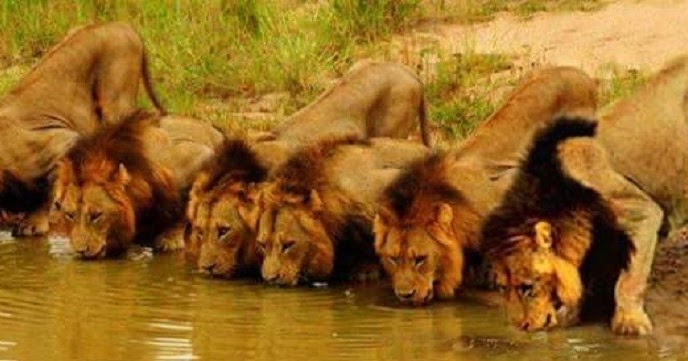‘Legend’ is a word that is thrown around too easily nowadays, but this term can certainly be used to accurately sum up the Mapogo lions of the Sabi Sands.
Their story is one of 6 magnificent lions who ruled their territory with an iron paw, striking fear into the hearts of all that crossed them.
It is believed they are responsible for over 100 lion fatalities, they survived longer than most male lions in the area and have wiped out entire prides in their relentless match for dominance.

The Mapogo lion coalition is a notorious band of brothers who went on a brutal quest to dominate and rule the Sabi Sands.
Their coalition became infamous for its sheer power and strength, and it was believed that they controlled an area of approx 70,000 hectares.
The area they controlled was once ruled by eight other prides.

The brothers have been labelled as sadistic and remorseless and hold a fearsome reputation in the lion world.
Much of this label is related to their rather harsh methods in dealing with offenders, in some regions they are actually known as the ‘Cannibals’ due to stories of them eating their challengers in an act of defiance.
The lion coalition allegedly was named after a South African security company who were known for their often brutal forms of dealing with criminals.

Their success as a coalition has changed the dynamic of the lion population in the area forever.
The Mapogo Coalition is not the first nor will it be the last large coalition, although coalitions of 6 or more male lions are rare.
The Bila Shaka male coalition is also a famous one, see these majestic lions at the Kruger National Park below
Male lions in Southern Africa typically live in coalitions. These coalitions are normally formed with relatives, brothers (often half-brothers) and cousins.
They usually form when the males are still cubs and living with their pride hence why they are usually related, but this isn’t always the case, there are records of unrelated males joining up and forming coalitions later in their lives.
The young males show signs of bonding behaviour early on which is critical for forming a coalition; they will spend more and more time in each other’s company as they grow and less time with their sisters.

They show their developing independence behaviour when they start lagging behind the pride when on the move and eventually leaving the pride between the ages of two and four.
Independence can be extremely stressful for young male lions as they have to learn to hunt for themselves, this is when they are most likely to scavenge.
So why do these coalitions form? The male lion is the dominant force in the wild and is constantly challenged by others.
These coalitions are a means of gaining territory and female lions who will rear their young and do most of the hunting for the pride, it goes without saying that strength is in the numbers.
Successful coalitions find females and gain access to them by chasing away the resident males, many of which are killed this way.
Once a coalition has gained access to the females, they typically settle for a while, spending time mating and fathering cubs.










